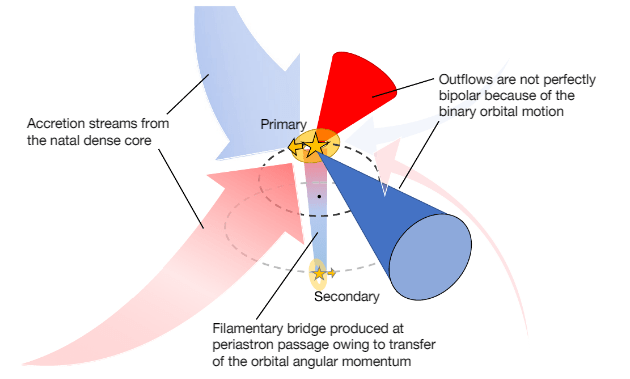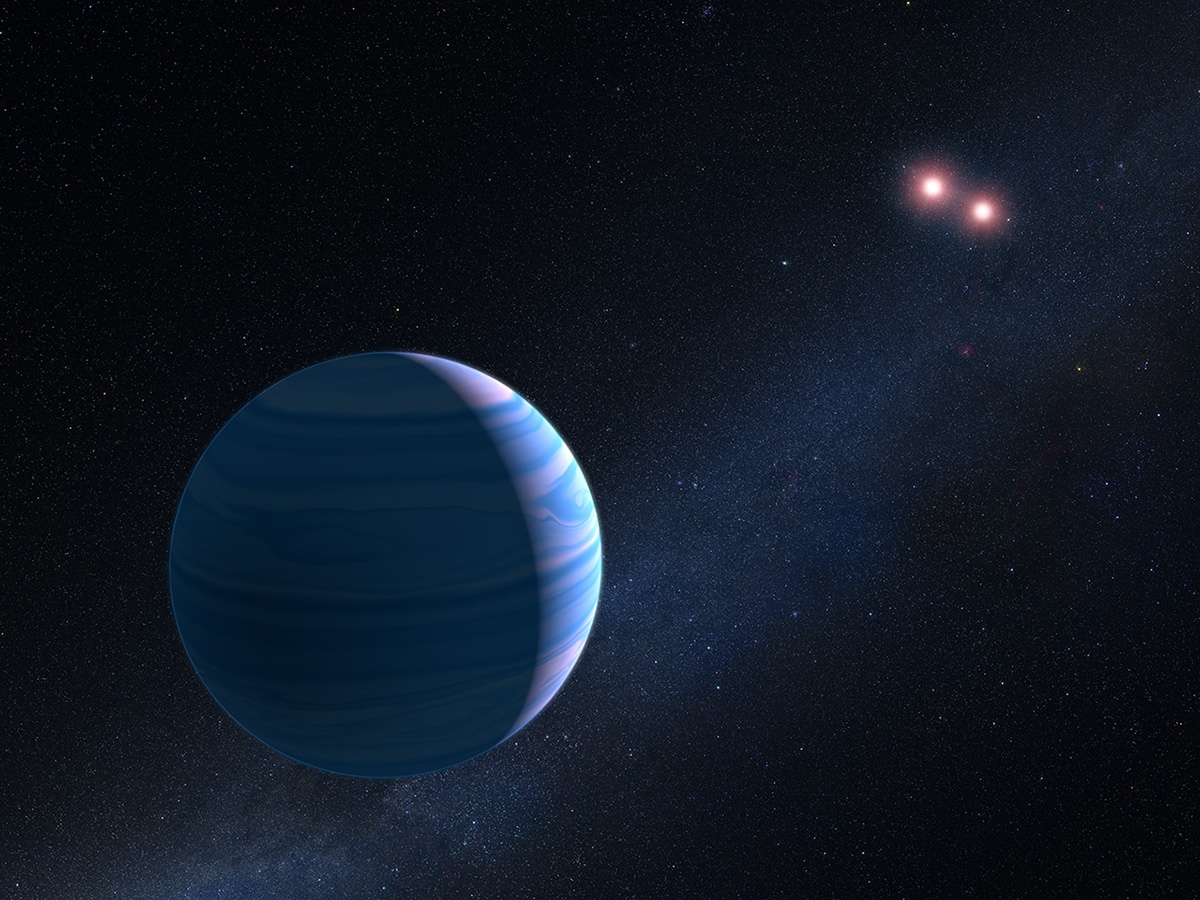Most of the stars in the Milky Way are single stars. But between one-third and one-half of them are binary stars. Can habitable planets form in these environments?
New research shows that habitable planets could exist around binary stars, but they would form differently than worlds around single stars.
A young binary star system about 1,000 light-years away is at the heart of this research. It’s called NGC 1333-IRAS2A, and it’s a low-mass binary protostar. The binary pair is so young it’s still gathering mass. It’s the focus of several studies into protostars and protostellar disks because it’s young and still forming.
The new study is titled “Binarity of a protostar affects the evolution of the disk and planets,” published in the journal Nature. The lead author is Professor Jes K. Jørgensen from the Niels Bohr Institute at the University of Copenhagen. Professor Jørgensen is co-author of several papers on NGC 1333-IRAS2A.
The study is based on ALMA (Atacama Large Millimetre/submillimetre Array) observations of NGC 1333-IRAS2A. These observations are only snapshots of a process that takes millions of years. But with these observations, and the knowledge gleaned from the study of young protostars in general, the research team created computer simulations of the binary protostar that reach backward and forward in time.
The study shows that planet formation is different around binary stars than solitary stars like our Sun. It’s because of the way the young stars behave as they form.
“The observations allow us to zoom in on the stars and study how dust and gas move towards the disc. The simulations will tell us which physics are at play, how the stars have evolved up till the snapshot we observe, and their future evolution,” explained Postdoc Rajika L. Kuruwita from the Niels Bohr Institute, who is the study’s second author.
Young protostars are surrounded by protoplanetary disks made of gas and dust. Inside the disks, planets form mostly via accretion. After millions of years of chaos and collision, planets coalesce and take up orbits. It’s a highly complex process that scientists are studying intently. Solar systems like ours are simple in one way: there is only one star. The star’s mass and gravity influence the morphology and behaviour of the protoplanetary disk and the planets that form in the disk.
But in a system with two protostars, there’s even more complexity.
In a single star system, the star accretes material more uniformly. There are still variations in accretion, but things progress more predictably with only one massive object. But as this study shows, binary protostars behave much differently as they form. Rather than a steady accretion process, the star formation process is marked by cyclical bursts of brightness as the stars orbit their common center of mass and periodically absorb large amounts of material. Those punctuated episodes of absorption trigger outbursts of energy which distort the disk. And that has implications for any planets forming in the disk of material around the stars.

“The falling material will trigger significant heating. The heat will make the star much brighter than usual,” says Kuruwita. “These bursts will tear the gas and dust disc apart. While the disc will build up again, the bursts may still influence the structure of the later planetary system.”

The episodes of increased infalling material are cyclical. For tens or hundreds of years, every thousand years or so, material movement into the stars becomes very strong. The binary stars brighten by tens or hundreds of times their normal brightness during these episodes before subsiding.
“The falling material will trigger a significant heating. The heat will make the star much brighter than usual,” says Kuruwita. “These bursts will tear the gas and dust disc apart. While the disc will build up again, the bursts may still influence the structure of the later planetary system.”
NGC 1333-IRAS2A is kind of like a laboratory for watching young systems form. There are no planets yet, so it’s too soon to conclude what effect this activity has on planetary formation or if habitable planets can form there. But other objects might also be a part of the habitability equation, and the research team intends to use ALMA to study the system some more, particularly comets.
Comets in our Solar System are known to carry some of the building blocks of life. Scientists have detected the amino acid glycine on comet 67P/Churyumov-Gerasimenko. They’ve also found ammonia salts and aliphatic compounds. These discoveries lend weight to the long-standing idea that comets can spread the materials for life throughout solar systems.

“Comets are likely to play a key role in creating possibilities for life to evolve. Comets often have a high ice content with the presence of organic molecules. It can well be imagined that the organic molecules are preserved in comets during epochs where a planet is barren and that later comet impacts will introduce the molecules to the planet’s surface,” said Professor Jørgensen.
Recent research shows that building blocks can form on icy grains in space. But in a system like NGC 1333-IRAS2A, the episodes of pronounced heating could disrupt or change the chemistry in that process.
“The heating caused by the bursts will trigger evaporation of dust grains and the ice surrounding them. This may alter the chemical composition of the material from which planets are formed,” said Jørgensen.
ALMA can detect some of these chemicals, particularly in gaseous form. And it can see some complex chemistry. In this study, the authors detected several complex chemicals around the protostars.

“The wavelengths covered by ALMA allow us to see quite complex organic molecules, so molecules with 9-12 atoms and containing carbon. Such molecules can be building blocks for more complex molecules which are key to life as we know it,” said Jørgensen. “For example, amino acids which have been found in comets.”
Humanity will have to watch NGC 1333-IRAS2A for millions of years to see what type of planets form. But we won’t have to wait that long to understand some of the chemistry in the system and what type of building blocks are present. The James Webb Space Telescope, ALMA, the upcoming Square Kilometer Array (SKA) and the European Extremely Large Telescope (E-ELT) will all work together to detect the elusive chemistry. Not only in this young binary protostar system but in others as well.
“The SKA will allow for observing large organic molecules directly. The James Webb Space Telescope operates in the infrared, which is especially well suited for observing molecules in ice. Finally, we continue to have ALMA, which is especially well suited for observing molecules in gas form. Combining the different sources will provide a wealth of exciting results,” Jørgensen said.
More:
- Press Release: Planets of binary stars as possible homes for alien life
- Published Research: Binarity of a protostar affects the evolution of the disk and planets
- Universe Today: Both Stars in This Binary System Have Accretion Disks Around Them

